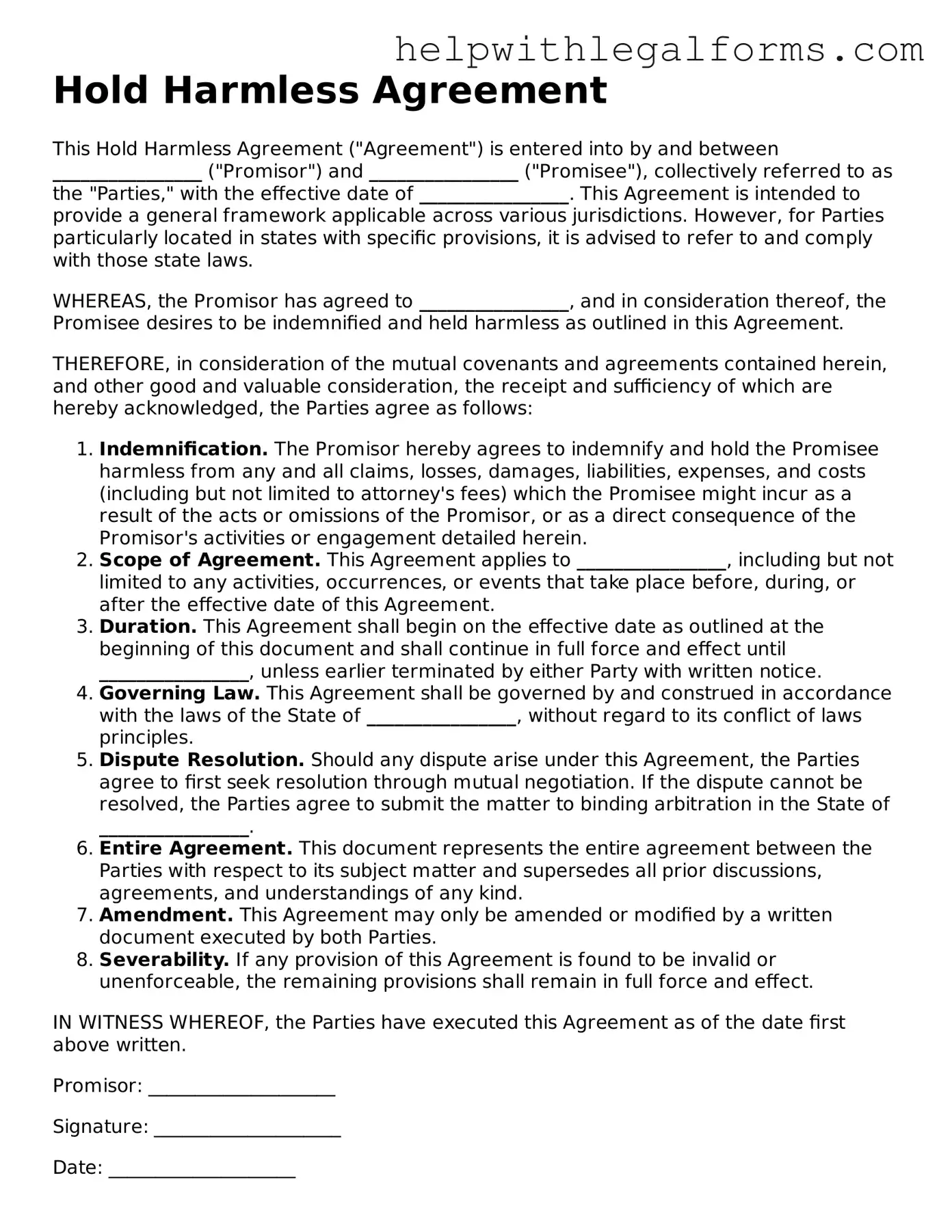Hold Harmless Agreement
This Hold Harmless Agreement ("Agreement") is entered into by and between ________________ ("Promisor") and ________________ ("Promisee"), collectively referred to as the "Parties," with the effective date of ________________. This Agreement is intended to provide a general framework applicable across various jurisdictions. However, for Parties particularly located in states with specific provisions, it is advised to refer to and comply with those state laws.
WHEREAS, the Promisor has agreed to ________________, and in consideration thereof, the Promisee desires to be indemnified and held harmless as outlined in this Agreement.
THEREFORE, in consideration of the mutual covenants and agreements contained herein, and other good and valuable consideration, the receipt and sufficiency of which are hereby acknowledged, the Parties agree as follows:
- Indemnification. The Promisor hereby agrees to indemnify and hold the Promisee harmless from any and all claims, losses, damages, liabilities, expenses, and costs (including but not limited to attorney's fees) which the Promisee might incur as a result of the acts or omissions of the Promisor, or as a direct consequence of the Promisor's activities or engagement detailed herein.
- Scope of Agreement. This Agreement applies to ________________, including but not limited to any activities, occurrences, or events that take place before, during, or after the effective date of this Agreement.
- Duration. This Agreement shall begin on the effective date as outlined at the beginning of this document and shall continue in full force and effect until ________________, unless earlier terminated by either Party with written notice.
- Governing Law. This Agreement shall be governed by and construed in accordance with the laws of the State of ________________, without regard to its conflict of laws principles.
- Dispute Resolution. Should any dispute arise under this Agreement, the Parties agree to first seek resolution through mutual negotiation. If the dispute cannot be resolved, the Parties agree to submit the matter to binding arbitration in the State of ________________.
- Entire Agreement. This document represents the entire agreement between the Parties with respect to its subject matter and supersedes all prior discussions, agreements, and understandings of any kind.
- Amendment. This Agreement may only be amended or modified by a written document executed by both Parties.
- Severability. If any provision of this Agreement is found to be invalid or unenforceable, the remaining provisions shall remain in full force and effect.
IN WITNESS WHEREOF, the Parties have executed this Agreement as of the date first above written.
Promisor: ____________________
Signature: ____________________
Date: ____________________
Promisee: ____________________
Signature: ____________________
Date: ____________________
